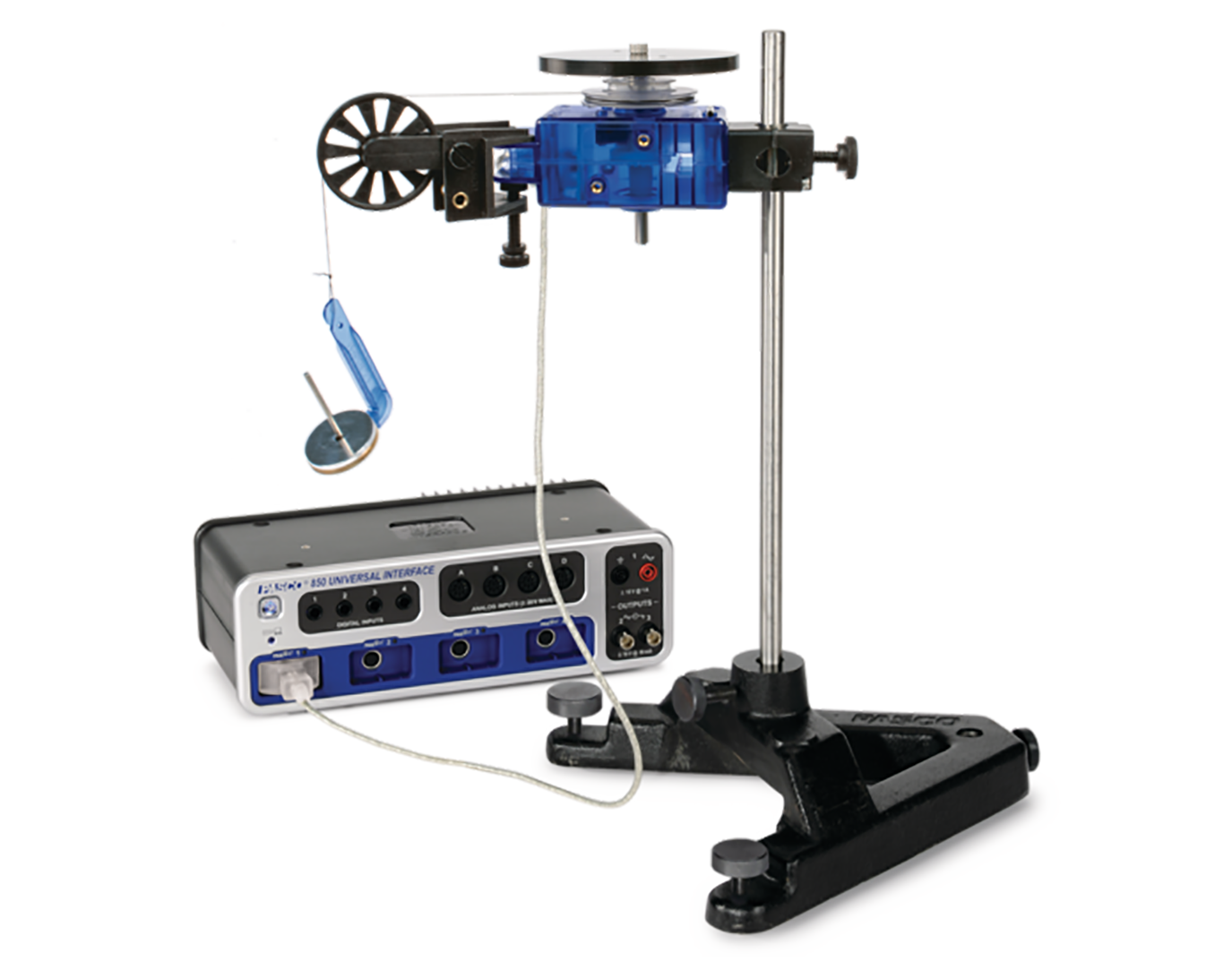Description
In this experiment, the rotational inertias of a ring and a disk are determined by applying a torque to the object and measuring the resulting angular acceleration.
A known torque is applied to the pulley on the Rotary Motion Sensor, causing a disk and ring to rotate. The resulting angular acceleration is measured using the slope of a graph of Angular Velocity vs. Time. The rotational inertia of the disk and ring combination is calculated from the torque and the angular acceleration. The procedure is repeated for the disk alone to find the rotational inertias of the ring and disk separately.
PASCO Advantage: Friction can be neglected in this compact setup. The Rotary Motion Sensor is a versatile tool that can be used in a variety of other experiments.
What’s Included
- 1x Large Rod Base (ME-8735)
- 1x 90 cm Stainless Steel Rod (ME-8738)
- 1x Rotational Inertia Accessory (ME-3420)
- 1x Mass and Hanger Set (ME-8979)
- 1x PASPORT Rotary Motion Sensor (PS-2120A)
Software Required
This product requires PASCO software for data collection and analysis. We recommend the following option(s). For more information on which is right for your classroom, see our Software Comparison: SPARKvue vs. Capstone »
Interface Required
This product requires a PASCO Interface to connect to your computer or device. We recommend the following option(s). For a breakdown of features, capabilities, and additional options, see our Interface Comparison Guide »
Required Accessories
| 1x Balance or Scale | ||
| 1x Digital Calipers | SE-8710 |


